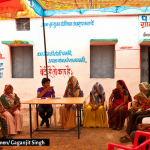
Livemint series: MGNREGA Implementation in 5 States
19 May 2010
The Mahatma Gandhi National Rural Employment Guarantee Scheme is considered one of the largest social safety nets of its kind, spending under which has totaled almost Rs. 80,000 crore in the past four years. Livemint has recently published an extensive series on MGNREGA, assessing its implementation in various regions. The record and status is patchy but hopeful, and continued government commitment to the program appears crucial for its success.
Uttar Pradesh: Bundelkhand is one of the least developed regions in India, making it an ideal environment to test the effectiveness of MGNREGA. The scheme has had few successes here and the defining narrative here is one of corruption and ignorance. To read the Livemint article, click here.
Chhattisgarh: With social progress and development widely considered effective barriers to the lure of Maoism, the success of MGNREGA in this region could prove especially significant. While initial results are hopeful, the state is still developing infrastructure to help MGNREGA projects take off. To read the Livemint article, click here.
Rajasthan: The MGNREGA appears to have altered both economic and social dynamics in the region. Almost two-thirds of the people employed under the scheme in this state are women, and their rising socio-economic independence is contributing significantly to their empowerment. To the read the Livemint article, click here.
Andhra Pradesh: The state is amongst the top-performers under the MGNREGA. Unlike most other states, officials in Andhra Pradesh have adopted an entirely different delivery model which bypasses the panchayats. The scheme has garnered impressive performance metrics with its unique delivery model which has remained successful. To read the Livemint article, click here.
Orissa: The lack of significant change brought about by the MGNREGA scheme in the severely poor, drought-afflicted region of Kalahandi highlights that it has not been able to avoid the usual trappings that hinder the effectiveness of social development programs. Primarily due to low awareness, the scheme has failed in its promise to provide a reliable safety net for the poor. To read the Livemint article, click here.





